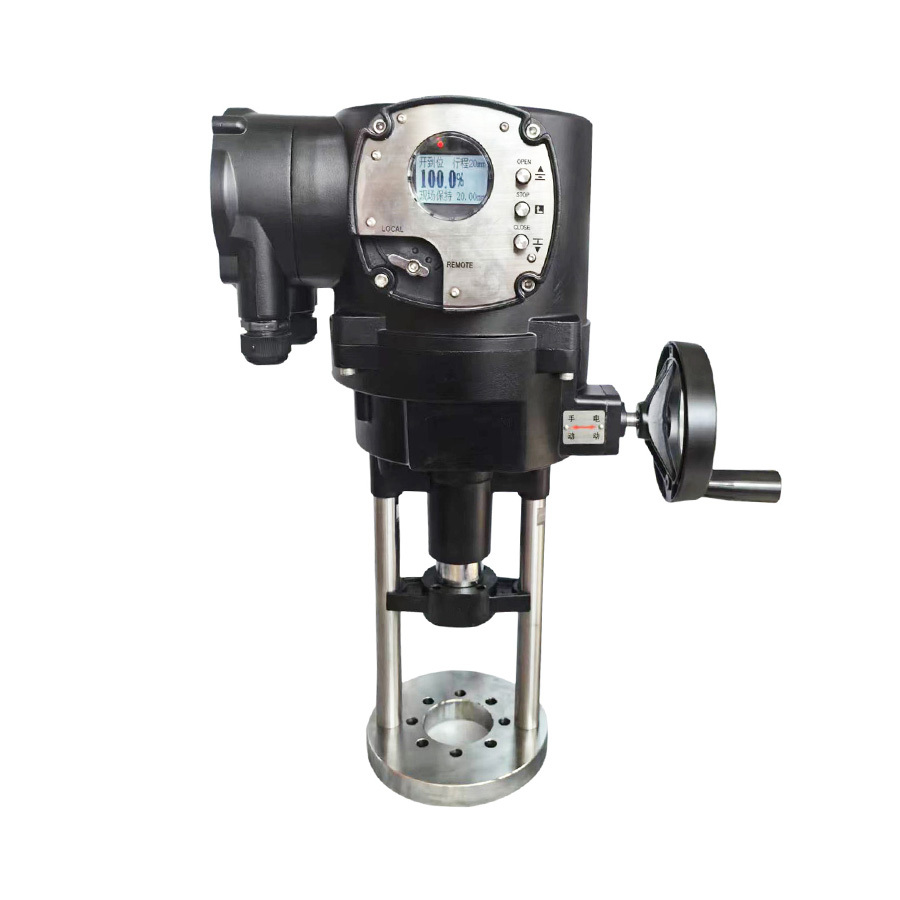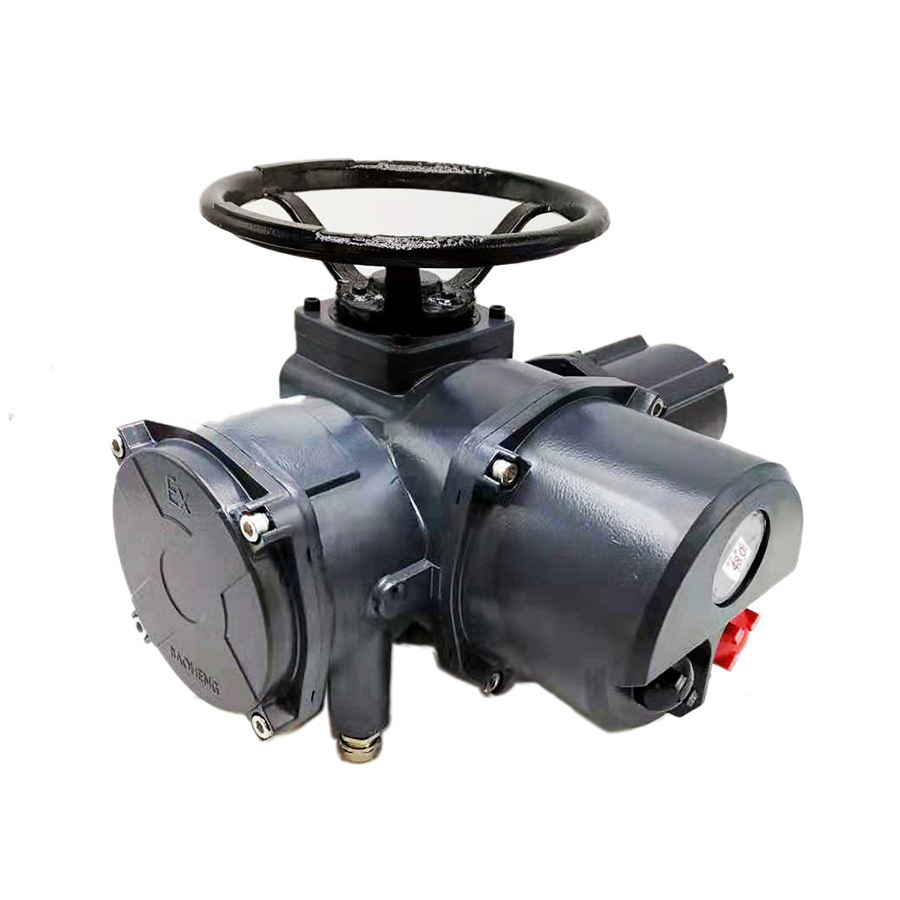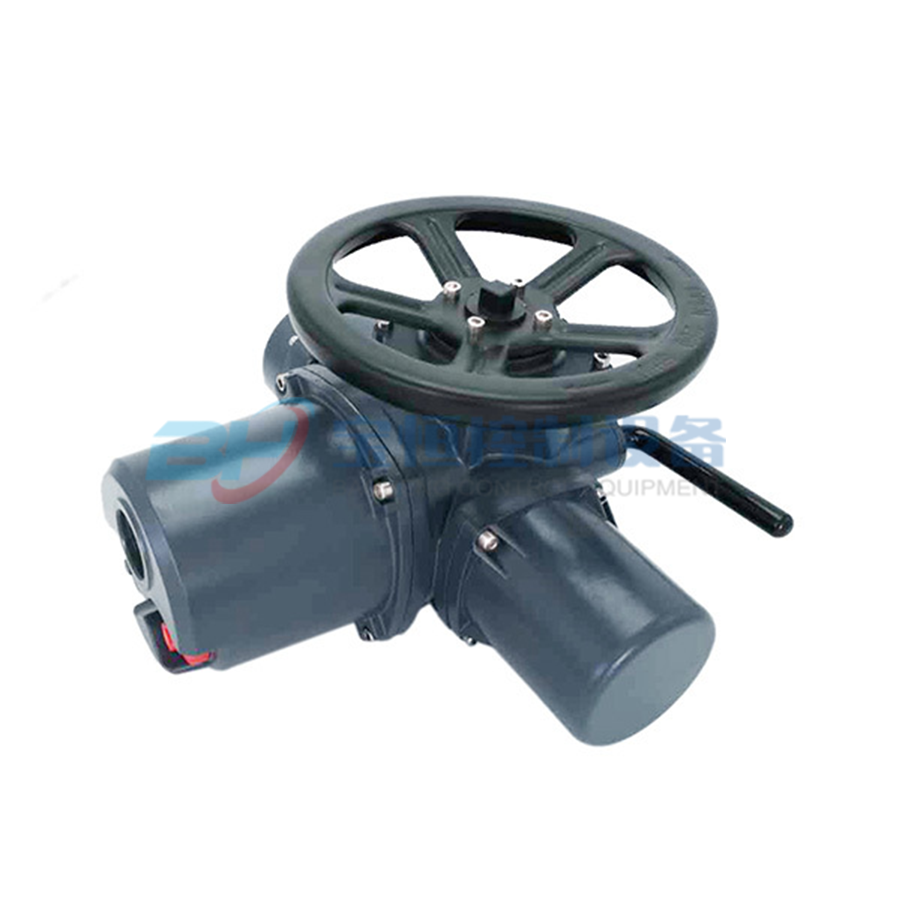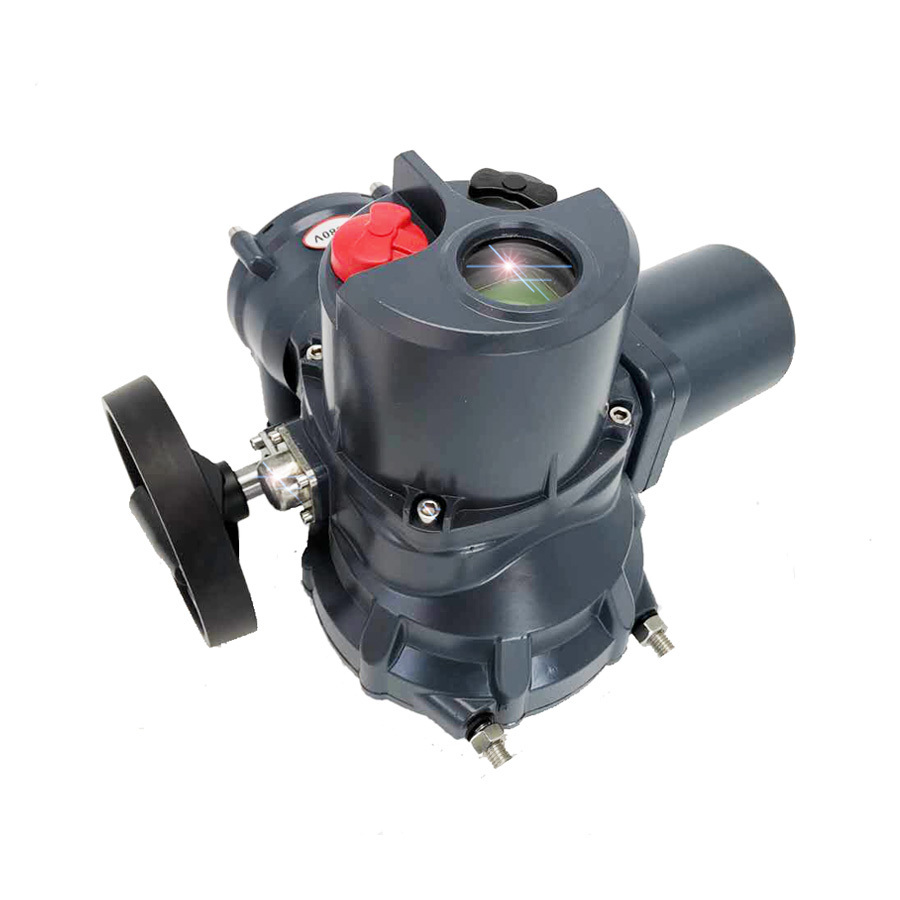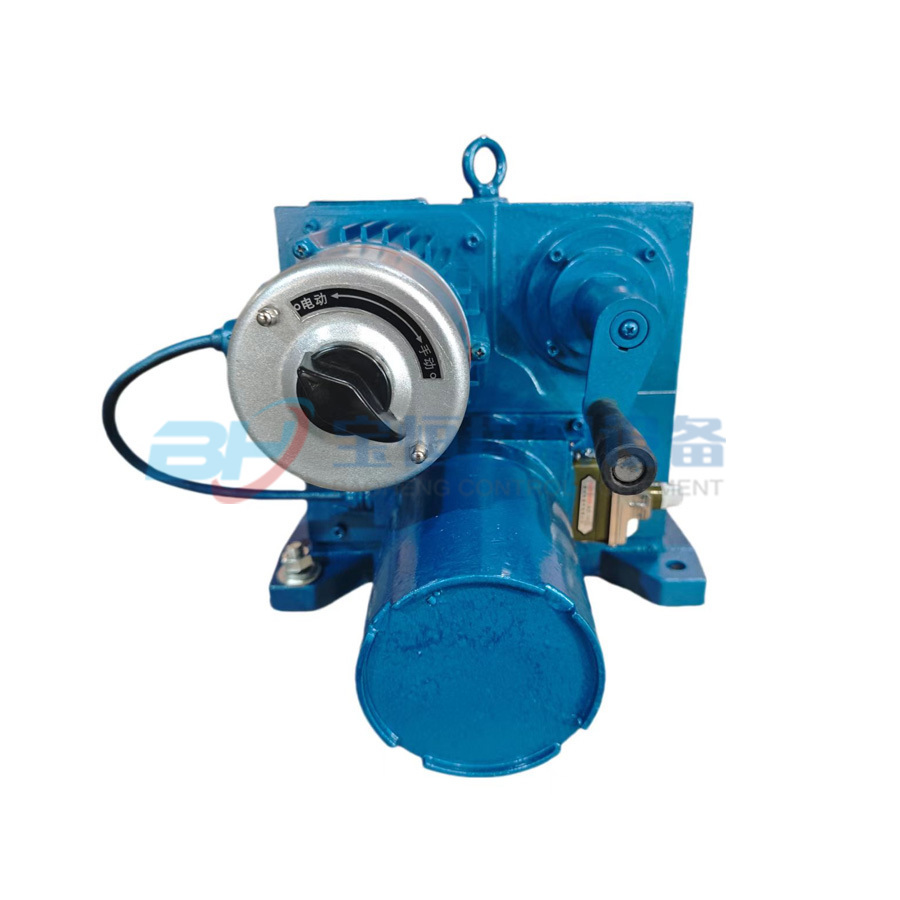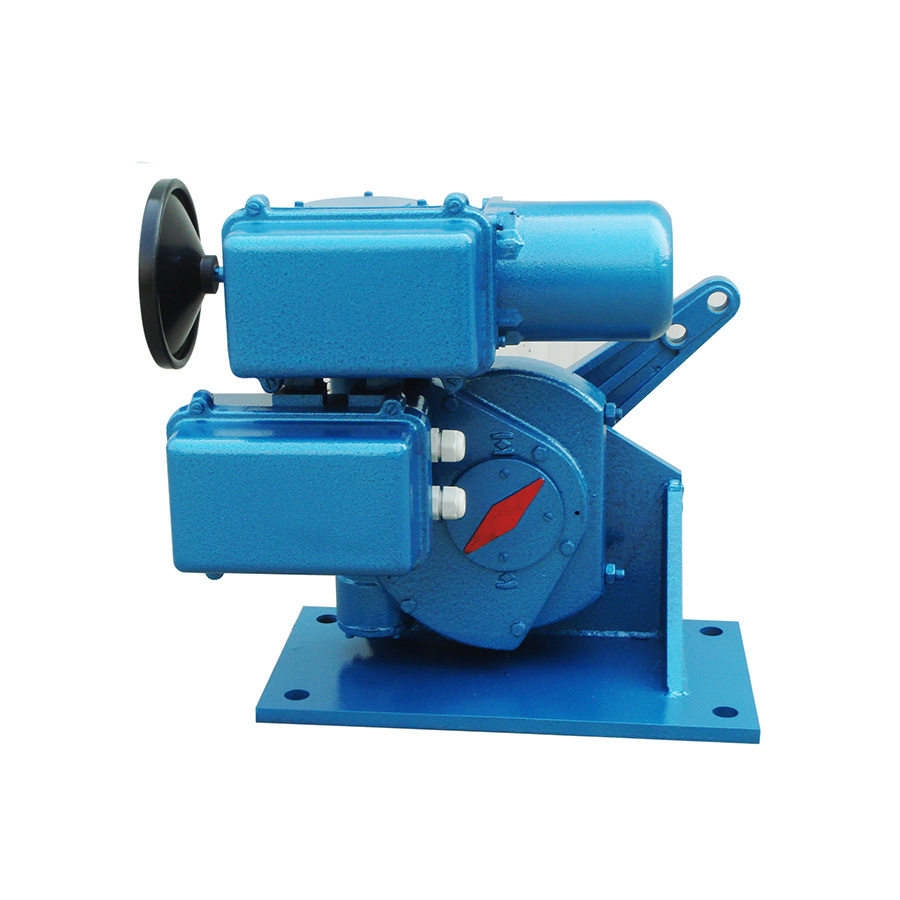ATE/ATD angle stroke pneumatic switch regulating valve
The angular stroke actuator uses compressed air as the power source, accepts switching signals (solenoid valves) or gas/electric analog signals, outputs angular displacement, and drives the regulated mechanism with a certain torque.
Keyword:
- Commodity name: ATE/ATD angle stroke pneumatic switch regulating valve
1. Overview
The angular stroke actuator uses compressed air as the power source, accepts switch signals (solenoid valves) or gas/electric analog signals, outputs angular displacement, and drives the regulated mechanism with a certain torque. This series of products has the following characteristics:
1: Compact double-piston gear and rack structure, precise, smooth transmission, and stable output torque.
2: The cylinder body is made of extruded aluminum alloy profile and treated with hard anodizing, resulting in high surface hardness and strong wear resistance.
3: The same specification has both double-acting and single-acting (using spring return) types.
4: The moving parts of the piston and output shaft are equipped with wear-resistant supports to avoid direct contact between metal parts and reduce wear.
5: Installation and connection dimensions are designed according to international standards IS005211, DIN3337, and VDI/VDE3845, ensuring strong product interchangeability.
6: The cylinder body, end cover, output shaft, spring, fasteners, etc., are all treated for rust and corrosion resistance.
7: The installation connection holes of the output shaft are available in various types (square holes, flat holes, keyway holes) for selection.
8: Products are available in normal temperature type, high temperature type, and low temperature type for user selection.
This series of products is generally used in conjunction with ball valves and butterfly valves.
2. Technical Data
1: Working medium: dry, clean, and free of corrosive gases compressed air.
2: Air source pressure: double-acting: 0.2-0.8MPa, single-acting: 0.4-0.8MPa
3: Ambient temperature: normal temperature type: -20C-+80C, high temperature type: -20C-+160C, low temperature type: -40C-+80C
4: Output angle: standard type: 90+4
5: Output torque: double-acting: 4-10560Nm, single-acting: 6.9-2668Nm
6: Interface size: AT40-AT83 G1/8", AT110-AT350 G1/4'.
Table 1 Actuator Appearance and Connection Dimensions
| Model\Size |
A |
A1 |
B |
C × Depth |
D × Depth |
E |
F |
G × Depth |
ΦH |
J |
K |
L |
| ATD/ATE40 |
104 |
1 | 45 |
8×12 |
M6×10 |
82 |
14 |
1 | 12 |
1 | 80 |
1 |
| ATD/ATE52 |
130 |
1 | 50 |
8×12 |
M6x10 |
84 |
15 |
M5x8 |
12 |
3 |
80 |
F03.Φ36 |
| ATD/ATE63 |
140 |
1 | 60 |
10x15 |
M8×12 |
108 |
15 |
M6x10 |
12 |
3 |
80 |
F05.Φ50 |
| ATD/ATE83 |
186 |
1 | 65 |
10x16 |
M8×12 |
128 |
17 |
M6×10 |
18 |
5 |
80 |
F05.Φ50 |
| ATD/ATE110 |
254 |
1 | 90 |
14×22 |
M10x16 |
160 |
25 |
M8×12 |
25 |
5 |
80 |
F07.Φ70 |
| ATD/ATE127 |
296 |
1 |
103 |
20×24 |
M10×16 |
180 |
25 |
M8×12 |
30 |
5 |
80 |
F07.Φ70 |
| ATD/ATE160 |
384 |
1 | 128 |
28×30 |
M12×20 |
228 |
30 |
M10×16 |
45 |
8 |
130 |
F10.Φ102 |
| ATD/ATE190 |
501 |
1 | 118 |
28×30 |
M16x24 |
257 |
34 |
M10x16 |
50 |
8 |
130 |
F10.Φ102 |
| ATD/ATE210 |
533 |
1 | 135 |
32×34 |
M16x24 |
285 |
34 |
1 |
60 |
8 |
130 |
1 |
| ATD/ATE225 |
589 |
722 |
159 |
40×40 |
M20×24 |
332 |
52 |
M20×24 |
65 |
10 |
130 |
F16.Φ165 |
| ATD/ATE300 |
638 |
793 |
196 |
40×40 |
M20×28 |
380 |
52 |
1 |
75 |
12 |
150 |
1 |
| ATD/ATE350 |
721 |
931 |
220 |
50x50 |
M20×28 |
438 |
72 |
1 |
90 |
12 |
150 |
1 |
Continued from the table
| Model\Size |
M |
N |
P |
Q |
ΦR |
□SxS |
□SW |
ΦT |
U |
V |
W |
Y Depth |
Z |
| ATD/ATE40 |
F04.Φ42 |
20 |
60 |
1 |
1 |
9x9 |
11x11 |
20 |
1 |
30 |
50 |
1 |
12 |
| ATD/ATE52 |
F05.Φ50 |
20 |
74 |
14.2 |
12.7 |
10x10 |
11x11 |
24 |
1 |
30 |
59 |
32 |
12 |
| ATD/ATE63 |
F05.Φ50 |
20 |
88 |
14.2 |
12.7 |
13×13 |
14x14 |
24 |
1 |
30 |
70 |
32 |
16 |
| ATD/ATE83 |
F07.Φ70 |
20 |
108 |
18.4 |
15.9 |
16x16 |
17x17 |
32 |
1 |
30 |
91 |
32 |
16 |
| ATD/ATE110 |
F07.Φ70 |
20 |
140 |
21.6 |
19.1 |
19×19 |
22×22 |
47 |
1 |
30 |
120 |
45 |
22 |
| ATD/ATE127 |
F10.Φ102 |
20 |
160 |
24.8 |
22.3 |
28x28 |
22x22 |
53 |
1 |
30 |
137 |
45 |
30 |
| ATD/ATE160 |
F12.Φ125 |
30 |
198 |
32.1 |
28.6 |
28×28 |
27×27 |
66 |
2 |
30 |
173 |
45 |
42 |
| ATD/ATE190 |
F12.Φ125 |
30 |
227 |
32.1 |
28.6 |
28×28 |
36x36 |
89 |
2 |
30 |
208 |
45 |
42 |
| ATD/ATE210 |
F14.Φ120 |
30 |
255 |
35.3 |
31.8 |
28×28 |
36x36 |
89 |
2 |
30 |
224 |
45 |
48 |
| ATD/ATE225 |
200x120 |
30 |
302 |
37.4 |
33.4 |
28×28 |
46x46 |
119 |
2 |
30 |
274 |
50 |
60 |
| ATD/ATE300 |
200×140 |
30 |
350 |
45.3 |
41.3 |
28×28 |
46x46 |
135 |
2 |
30 |
322 |
65 |
80 |
| ATD/ATE350 |
260x160 |
30 |
408 |
50.8 |
50.8 |
28x28 |
60x60 |
156 |
2 |
30 |
378 |
70 |
100 |
6. Selection Instructions
1: ATD Double-acting Actuator
Use a double-acting actuator, first determine the torque of the valve, increase the safety factor by 20% for steam or non-lubricated media; increase the safety factor by 60% for non-lubricated dry gas media; increase the safety factor by 100% for non-lubricated gas conveying particulate powder media; for clean, frictionless lubricated media, increase the safety factor by 20%, then refer to the double-acting torque table based on the working pressure of the air source to obtain the accurate ATD model. For example, if the air source pressure is only 0.5MPa, controlling a ball valve that requires 400Nm, considering safety factors, increase by 25% safety factor, use a 500Nm actuator, refer to the table to select 591Nm, model ATD160.
2: ATE Double-acting Actuator (Spring Return)
Using a single-acting actuator, first determine the torque of the valve. For steam or non-lubricated media, increase the safety factor by 20%; for non-lubricated dry gas media, increase the safety factor by 60%; for non-lubricated gas conveying particulate powder media, increase the safety factor by 100%; for clean, frictionless lubricated media, increase the safety factor by 20%. Then, based on the working pressure of the gas source, refer to the single-acting torque table. First, find the spring return endpoint, then find the gas source pressure endpoint. The gas source pressure torque should be greater than the spring return torque to obtain the accurate ATE Model. For example, if the gas source pressure is only 0.4MPa and it controls a butterfly valve requiring a torque of 180Nm, with the medium being non-lubricated dry gas, considering safety factors, increasing by 60% equals 288Nm. First, check the table to find the spring return endpoint, which gives a torque of 305Nm. Then, along that row, look for the starting torque at a gas source pressure of 0.4MPa, which is 584Nm. The gas source pressure torque is greater than the spring return torque, and then look for its model along that row, selecting ATE190.
In the ATE single-acting actuator output torque table, the spring return "endpoint" torque is the torque for closing the valve, and the spring return "starting" torque is the torque for opening the valve. The corresponding starting torque of the gas source pressure is the torque for closing the valve, and the gas source pressure "endpoint" torque is the torque for opening the valve.
Message





